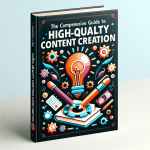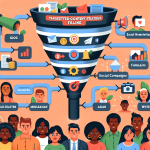The Power of Structured Content
Structured articles have more to offer than unstructured ones. They positively impact user engagement, brand trust, and customer education. By presenting information in an organized manner, customers are more likely to read, understand, and interact with the content. This approach allows us to establish authority and trust in our brand, making the consideration stage of the buyer’s journey more effective.
Creating an Impact via Content Approaches
To make your content more effective, consider using structured formats like testimonials, product comparison tables, or even step-by-step guides. These methods provide detailed and valuable information in a digestible format, helping potential customers make informed decisions. A comprehensive FAQ section, answering crucial customer queries, is another effective strategy in this context.
Engagement Techniques
Engaging the audience at the consideration stage can be achieved by interactive elements such as webinars, Q&A sessions, live demos, or even polls. Personalized interactions to cater to individual customers’ needs also enhance engagement, paving the way to a more focused buyer’s journey. For more on personalized interactions, check this out.
Measuring Impact
The impact of the consideration content can be measured using key metrics like engagement rates and conversion rates. Tools and methods for gathering customer feedback also play a pivotal role. Based on these data and customer feedback, content strategies can be refined and improved upon to guarantee effective results. Explore further on how to refine your content strategy.
Conclusion
Structured articles possess the power to guide customers through the consideration stage of their buyer’s journey effectively. The thoughtful structure, coupled with engaging elements, aids in enhancing its readability, ultimately leading to better conversion rates. As such, it’s worth investing in creating a structured blog post, for it can potentially shape your brand’s success. Read more on how structured content can influence business growth.
Related Posts:












